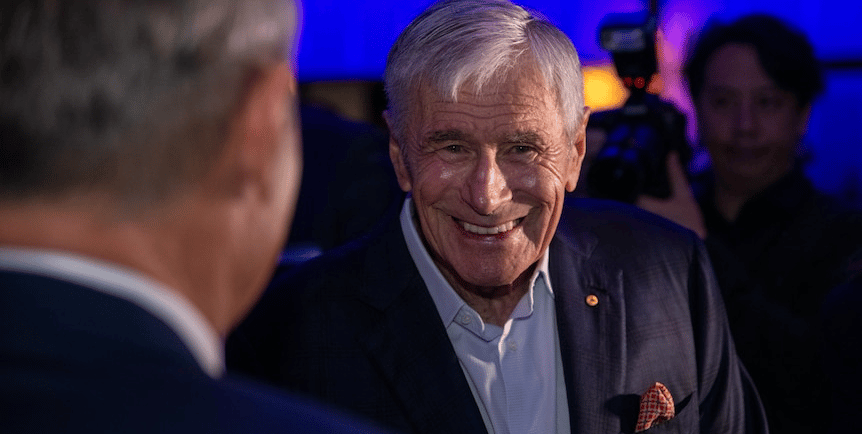A New Chapter in Australian Media: Southern Cross and Seven West Unite as Kerry Stokes Steps Aside
The merger between Southern Cross Media and Seven West Media signals a profound shift in Australia’s broadcasting landscape. As media titan Kerry Stokes steps down, this move marks both an end of an era and the beginning of a new strategic vision for the future of Australian journalism and entertainment.
MARKETERS


In an industry defined by constant evolution, few moments stand out as turning points that reshape its very foundation. The announced merger between Southern Cross Media and Seven West Media is one such moment—a bold consolidation that will redefine how Australians consume news, entertainment, and digital content. Yet the announcement carries emotional weight beyond the business headlines. It coincides with the retirement of Kerry Stokes, one of Australia’s most influential media leaders, marking the close of a remarkable chapter in national broadcasting history.
The merger represents more than a financial or operational decision. It is a response to the rapid convergence of traditional media and digital ecosystems. As streaming platforms, algorithmic feeds, and audience fragmentation continue to challenge long-standing networks, strategic unity has become essential for survival. By joining forces, Southern Cross and Seven West aim to create an integrated powerhouse capable of competing not just with domestic rivals but with global content giants that dominate audience attention across screens and devices.
Industry analysts suggest that this merger could significantly enhance regional and metropolitan reach, combining Southern Cross’s expansive radio and regional television footprint with Seven West’s established presence in news, sport, and digital publishing. Together, they form a media network that touches nearly every corner of the country, from local communities to national audiences. This alignment of scale and influence creates opportunities for deeper storytelling, cross-platform advertising innovation, and stronger journalistic collaboration.
For decades, Kerry Stokes has been synonymous with Seven West Media’s identity. His leadership was marked by an unwavering belief in the power of Australian storytelling and the importance of independent journalism. Under his direction, Seven West navigated multiple economic downturns, the digital disruption of traditional television, and the rise of global streaming competition. Stokes’ departure signals not decline, but renewal. It allows a new generation of leaders to bring contemporary thinking to a heritage institution—leaders who must now navigate the delicate balance between commercial agility and editorial trust.
Behind the optimism, however, lie pressing questions. Will consolidation limit diversity of voice in the Australian media landscape? How will the merged entity ensure that local content continues to thrive amid increasing pressure for cost efficiency and scale? These questions are not simply academic—they shape the public’s confidence in media institutions at a time when that confidence is already fragile.
Data from the Reuters Institute’s 2025 Digital News Report reveals that public trust in traditional media has fallen by more than 20 percent in the past five years across Australia. Audiences are increasingly skeptical of news organizations that appear more driven by profit than purpose. The Southern Cross–Seven West merger, therefore, arrives at a crucial inflection point: it must not only deliver financial stability but also rebuild the emotional and ethical bond between Australian media and its viewers.
The success of this partnership will depend on how transparently it integrates editorial cultures and how boldly it invests in local journalism. Media experts argue that consolidation need not mean homogenization if guided by clear values and public accountability. By pooling resources, the new entity can reinvigorate investigative reporting, expand regional coverage, and embrace emerging technologies such as AI-driven production tools without sacrificing journalistic integrity.
There are also strategic benefits beyond content. Advertisers are seeking unified platforms capable of delivering measurable cross-channel performance. The merger provides precisely that—an opportunity to offer brands a seamless path from broadcast to digital engagement. In a marketplace increasingly defined by data, integrated audience ecosystems hold enormous potential for both creative innovation and commercial sustainability.
Still, the human element remains central. Kerry Stokes’ legacy reminds the industry that behind every headline and broadcast, there is a purpose that transcends metrics: informing, inspiring, and connecting communities. His decision to step aside underscores a rare kind of leadership humility—recognizing that enduring influence comes not from holding power indefinitely but from enabling transformation at the right time.
For Australian media professionals, this moment offers both challenge and inspiration. The merger will likely spark internal restructuring, new collaborations, and fresh creative strategies. But its deeper significance lies in what it represents for the industry’s future direction. If guided with vision and integrity, this union could mark the beginning of a stronger, more cohesive era in national storytelling—one that unites legacy and innovation in service of the public good.
At TMFS, we view this development as a defining test of how leadership, strategy, and ethics intersect in the modern media environment. The lessons emerging from this merger extend far beyond the newsroom. They speak to every organization navigating disruption: the courage to adapt, the wisdom to collaborate, and the discipline to preserve values while pursuing growth.


